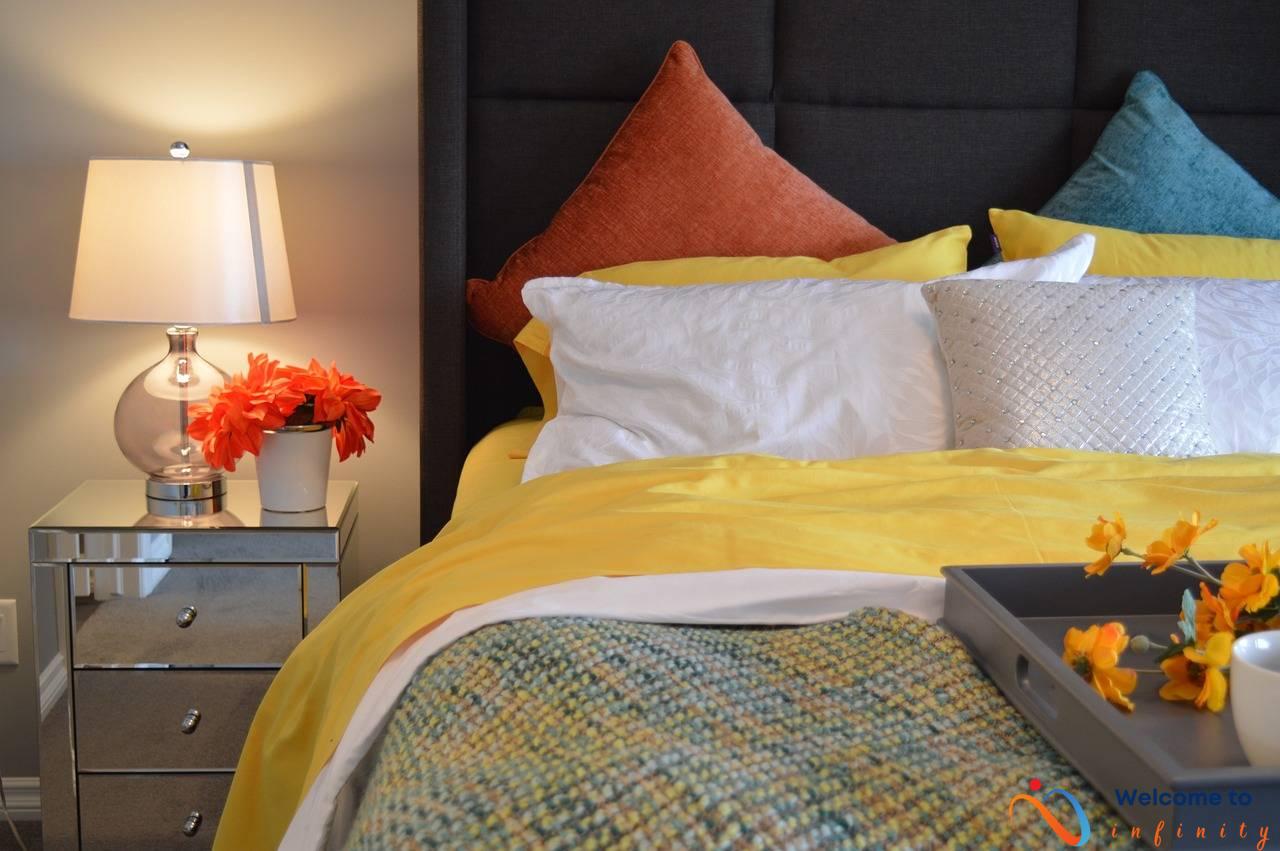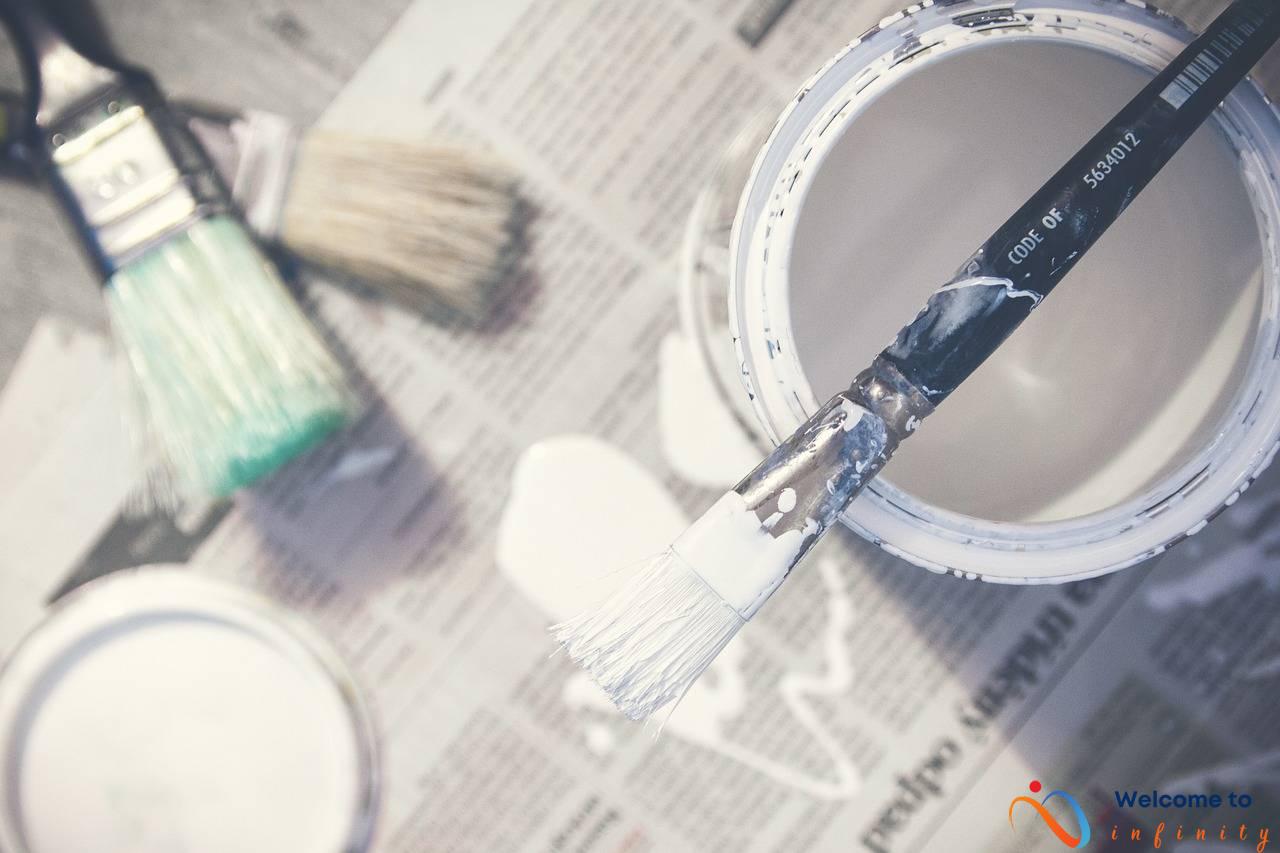Are you looking to make your home more eco-friendly? One simple switch to consider is incorporating sustainable textiles into your home decor. Sustainable textiles are made from environmentally-friendly materials and processes, and they offer a variety of benefits that can make a big difference in the long run.
So, what exactly are sustainable textiles? These are materials that are produced using sustainable methods and materials, with minimal impact on the environment. This includes using natural fibers like hemp, bamboo, and organic cotton, and avoiding synthetic materials that can be harmful to the earth. By choosing sustainable textiles, you can reduce your carbon footprint and contribute to a more sustainable future.
There are many benefits to using sustainable textiles in your home. For one, these materials are designed to be durable and long-lasting, which means you won't have to replace them as frequently as you would with conventional textiles. Additionally, sustainable textiles are produced using eco-friendly processes that don't harm the environment, making them a great choice for those who want to live a more sustainable lifestyle.
Sustainable textiles can also offer health benefits for you and your loved ones. These materials are produced using fewer harmful chemicals, which can reduce your exposure to toxins in the home. This can lead to a healthier indoor environment overall.
If you're unsure of where to start, there are many examples of sustainable textiles to explore. These include bamboo textiles, hemp textiles, and organic cotton textiles. Each of these options comes with unique properties and benefits, so it's worth researching and finding the right fit for your home.
Once you've selected the sustainable textiles you want to incorporate into your home, it's time to get creative. From bedding and linens to curtains and rugs, there are many practical ways to integrate sustainable textiles into your decor. By making these small changes, you can make a big difference for your home and the planet.
What are Sustainable Textiles?
Sustainable textiles refer to materials that are produced using environmentally-friendly methods and materials that have minimal impact on the environment. They are designed to minimize waste, reduce the use of harmful chemicals, and decrease the overall carbon footprint of the textile industry.
The traditional textile industry is known to have a significant impact on the environment. The production of conventional textiles involves the use of harmful chemicals, high levels of water consumption, and the release of toxic gases into the atmosphere. Sustainable textiles aim to address these issues by using natural and organic materials, reducing chemical use, and adopting more sustainable production processes.
By choosing sustainable textiles, you can help reduce the negative impact that conventional textiles have on the environment. You can choose from a range of materials including organic cotton, bamboo, hemp, and wool. These materials are produced using eco-friendly processes and renewable resources, making them a great choice for environmentally-conscious consumers.
- Organic cotton is grown without the use of pesticides or synthetic fertilizers, making it a more sustainable alternative to traditional cotton.
- Bamboo is a highly renewable resource that is grown without the use of harmful chemicals, making it an eco-friendly choice for textiles.
- Hemp is a durable and environmentally-friendly material that can be used to create everything from clothing to home décor items.
In summary, sustainable textiles offer a more eco-friendly alternative to traditional textiles. They are produced using natural and organic materials, eco-friendly processes, and are designed to minimize waste and reduce the overall impact on the environment. By incorporating sustainable textiles into your home décor, you can contribute to a more sustainable future for our planet.
Benefits of Sustainable Textiles
When it comes to decorating your home, choosing sustainable textiles is a wise choice that can have a positive impact on the environment and your overall well-being. Sustainable textiles are produced using eco-friendly materials and processes, making them a more sustainable alternative to conventionally produced materials. Here are some of the benefits of using sustainable textiles in your home:
Sustainable textiles are designed to last longer than their conventional counterparts, which often wear out quickly due to chemical treatments and synthetic fibers. This means that you'll get more use out of each piece, reducing the need to replace them frequently.
Perhaps the most crucial benefit of sustainable textiles is their eco-friendliness. The production of conventional textiles can have a significant impact on the environment, including the use of harmful chemicals, water pollution, and the depletion of natural resources. In contrast, sustainable textiles are produced in ways that minimize these negative impacts on the environment.
Sustainable textiles can also contribute to a healthier home environment by reducing exposure to harmful chemicals. Conventionally produced textiles often contain synthetic materials and chemical treatments, which can off-gas and contribute to poor indoor air quality. In contrast, sustainable textiles are produced using natural materials and processes, making them a safer and healthier choice for your home.
By choosing sustainable textiles for your home decor, you can enjoy the benefits of durability, eco-friendliness, and improved health outcomes. Whether you're choosing bedding, curtains, or throw pillows, there are plenty of sustainable options available to fit your style and budget.
Durability
Sustainable textiles are not only better for the environment, but they also offer a more durable alternative to conventional materials. These textiles are made to last, ensuring that your home decor will stay stylish and functional for years to come.
One of the reasons sustainable textiles are more durable is because they are often made from natural fibers that are stronger than synthetic alternatives. For example, organic cotton is stronger and more resilient than conventional cotton, making it less likely to break down or wear out over time.
In addition to using stronger materials, sustainable textiles are also treated with fewer chemicals and additives than conventional materials. This means that they are less likely to break down or deteriorate due to exposure to harsh chemicals or environmental factors. As a result, sustainable textiles can withstand wear and tear better than conventional materials.
Furthermore, sustainable textiles are often designed and produced with a focus on quality and longevity. This means that the textiles are crafted with attention to detail and made to withstand the test of time. By choosing sustainable textiles, you're investing in quality materials that will last for years and reduce the need for constant replacements.
In conclusion, sustainable textiles offer a durable and long-lasting alternative to conventional materials. By choosing sustainable options for your home decor, you're not only making a positive impact on the environment, but also investing in high-quality, long-lasting materials that will stand the test of time.
Eco-friendliness
When it comes to sustainable textiles, eco-friendliness is a top priority. These textiles are produced using environmentally-friendly processes and materials, making them an ideal choice for anyone wanting to reduce their carbon footprint. The production of conventional textiles is notorious for its negative impact on the environment, from the use of harmful chemicals to the enormous amounts of water required.
On the other hand, sustainable textiles are produced with minimal harm to the environment. Many sustainable fabrics are made from natural materials such as organic cotton, bamboo, and hemp, which require less water and fewer pesticides than conventional cotton and fabrics made from synthetic materials.
Additionally, sustainable textile production processes aim to minimize waste and energy consumption. For example, some sustainable textile manufacturers use closed-loop systems in the dyeing process, allowing the waste water to be cleaned and reused, reducing the amount of water used in the process.
Moreover, sustainable textile production practices ensure fair labor practices and support the livelihoods of local communities. Through the use of sustainable materials and ethical practices, sustainable textiles are a step towards a more responsible and sustainable future.
- Use of natural materials that require fewer pesticides and less water usage
- Minimization of waste and energy consumption during production
- Fair labor practices and support of local communities
Health Benefits
Health Benefits
Sustainable textiles not only benefit the environment, but they can also have positive effects on human health. Many conventional fabrics are treated with harsh chemicals and pesticides during production, which can be harmful to both the workers involved in manufacturing and the end-users who come in contact with the textiles. By using sustainable textiles, you can reduce your exposure to these harmful chemicals.
Sustainably produced fabrics are typically made using natural fibers that are grown without the use of toxic pesticides or synthetic fertilizers. Additionally, the production process for sustainable textiles often involves using natural dyes and finishes instead of the toxic chemicals used in conventional textile production. This means that sustainable textiles can be a safer and healthier option for your home environment.
One study has even shown that indoor air quality can be improved by using textiles made from organic cotton. The study found that organic cotton textiles released fewer volatile organic compounds (VOCs), which are harmful chemicals that can be released from certain building and household materials. By choosing to use sustainable textiles in your home, you can reduce your exposure to these harmful chemicals and create a healthier indoor environment.
Examples of Sustainable Textiles
When it comes to sustainable textiles, there are several options available that are both eco-friendly and stylish. Bamboo, hemp, and organic cotton are just some examples of sustainable textiles that you can incorporate in your home decor.
Bamboo: Bamboo is a versatile and sustainable material that can be used to create a variety of textiles, from bedding to towels. It is a fast-growing plant that requires less water and pesticides than conventional cotton. Bamboo textiles are also known for their softness, durability, and moisture-wicking properties, making them a great option for sheets and towels.
Hemp: Hemp is a durable and resilient fiber that is perfect for home decor textiles such as curtains, upholstery, and rugs. It is naturally resistant to bacteria, mold, and mildew, which makes it ideal for frequently used items like curtains and upholstery. Hemp is also easy to grow and requires no pesticides or fertilizers, making it an eco-friendly choice.
Organic Cotton: Organic cotton is grown without the use of toxic pesticides and synthetic fertilizers. This reduces the environmental impact of cotton production and also benefits the health of farmers and workers who are involved in cotton farming. Organic cotton textiles are soft, breathable, and hypoallergenic, making them perfect for bedding and clothing.
When choosing sustainable textiles, it is important to look for certifications such as Global Organic Textile Standard (GOTS) and OEKO-TEX Standard 100. These certifications ensure that the textiles are produced using environmentally-friendly processes and materials and do not contain harmful chemicals.
By incorporating sustainable textiles in your home decor, you can make a positive impact on the environment while enjoying stylish and durable products. So why not make the switch to sustainable textiles today?
Bamboo textiles
Bamboo textiles are becoming increasingly popular as a sustainable textile option for home decor. Bamboo is a natural, eco-friendly resource that grows rapidly, making it a renewable material. It also has unique properties that make it an excellent material for textiles.
One of the benefits of bamboo textiles is that they are incredibly soft and comfortable to the touch. Bamboo fibers are similar to cotton in terms of softness and breathability, making them ideal for bedding and clothing. In addition, bamboo textiles are moisture-wicking, which means they can absorb and evaporate moisture faster than other materials, keeping you cool and dry.
Bamboo is also a highly durable material, which makes it ideal for home decor accessories like rugs and throw pillows. It is naturally antibacterial and resists odor, which means it can withstand heavy foot traffic and regular use without showing signs of wear and tear. Bamboo textiles are also easy to care for and can be washed in cold water and dried on a low heat setting without losing their softness or shape.
When it comes to sustainability, bamboo is an excellent choice for textiles because it requires fewer resources to grow compared to cotton and other materials. Bamboo is a hardy plant that grows quickly and does not require pesticides or fertilizers, which reduces its environmental impact. It also has a high absorption rate of carbon dioxide, making it an efficient material for carbon sequestration, which helps combat climate change.
In conclusion, bamboo textiles are an excellent choice for sustainable home decor. They are soft, comfortable, durable, and eco-friendly. By incorporating bamboo textiles into your home decor, you can enjoy the benefits of a stylish and sustainable living space.
Hemp textiles
Hemp textiles are becoming increasingly popular due to their eco-friendliness and durability. Unlike traditional textiles, hemp does not require pesticides or herbicides to grow, making it a more sustainable and environmentally friendly option. In addition, hemp fibers are stronger and more durable than cotton, which means hemp textiles are likely to last longer than conventional materials.
Hemp textiles are also naturally resistant to mold and mildew, making them a great choice for humid environments or areas prone to moisture. Additionally, hemp can be blended with other materials such as cotton or silk to create a variety of textures and patterns.
One of the most significant benefits of hemp textiles is their positive impact on the environment. Hemp plants require significantly less water than cotton plants, which means they have a smaller environmental footprint. Hemp textiles are also biodegradable, which means they won't contribute to landfill waste or pollute the environment when they're no longer in use.
When it comes to incorporating hemp textiles into your home decor, there are many options to choose from. Hemp is commonly used in the production of bed linens, shower curtains, and bath towels. You can also find hemp curtains, rugs, and upholstery fabrics that are perfect for adding texture and natural beauty to your home.
In conclusion, hemp textiles offer numerous benefits over traditional materials, including their durability, moisture resistance, and eco-friendliness. By incorporating hemp textiles into your home decor, you can enjoy the beauty and comfort of natural materials while reducing your environmental impact at the same time.
Organic Cotton textiles
Organic cotton is considered a great sustainable textile option due to the way it is produced. Conventionally-grown cotton uses large amounts of pesticides, herbicides, and synthetic fertilizers, which can have harmful environmental impacts. Organic cotton, on the other hand, is grown without the use of these harmful chemicals. This makes it a preferred option for those who are concerned about the environmental impact of their choices.
In addition to being more environmentally-friendly, organic cotton is also a better choice for human health. Cotton is a crop that is heavily treated with chemicals, and these chemicals can be absorbed through the skin. By choosing organic cotton, you can reduce your exposure to these potentially harmful chemicals.
Organic cotton is also more durable than conventionally-grown cotton. It is typically grown with a focus on long-term sustainability, which means that the soil is healthier and the crops are stronger. This strong foundation results in cotton fibers that are sturdier and less likely to break.
When it comes to comparing organic cotton to conventional cotton, the most significant difference is that organic cotton is grown without the use of harmful chemicals. This makes it a more sustainable and eco-friendly option. Additionally, organic cotton is often softer and stronger than conventionally-grown cotton due to the way it is cultivated.
If you are interested in incorporating organic cotton textiles in your home decor, there are many options available on the market. From sheets and pillowcases to towels and bath mats, there are plenty of opportunities to make sustainable choices in your home. Consider looking for products made from certified organic cotton to ensure that you are getting a truly sustainable option.
Incorporating Sustainable Textiles in Your Home Decor
If you're looking to make the switch to sustainable textiles in your home decor, it's easier than you may think. By incorporating sustainable textiles into your bedding and linens, curtains, and throw pillows and rugs, you can add an eco-friendly touch to your home while still maintaining style and comfort.
When it comes to sustainable bedding and linens, there are a few key things to keep in mind. Look for products made from organic cotton or hemp, as these materials are grown without harmful chemicals and require less water to produce. Consider investing in a high-quality comforter made from organic cotton or wool, which can help regulate your body temperature and improve your sleep quality.
When selecting sheets and pillowcases, keep an eye out for the Global Organic Textile Standard (GOTS) certification, which guarantees that the product is made from organic fibers and produced using environmentally-friendly processes. And don't forget to care for your sustainable bedding properly, by washing it in cold water and avoiding the use of harsh chemicals and dryers.
Sustainable curtains and drapes can be both stylish and functional, helping to reduce unwanted heat gain or loss in your home while also adding a pop of color or texture. Look for curtains made from organic cotton or linen, as these fabrics are breathable, durable, and easy to clean.
You can also opt for curtains made from recycled fibers, such as polyester or nylon, which divert waste from landfills and require less energy to produce. And don't forget to consider the installation methods—you can opt for curtains that are hung from a rod or track, or choose shades or blinds that can be adjusted for light and privacy.
Throw pillows and rugs can be an easy and affordable way to incorporate sustainable textiles into your home. Look for pillows made from organic cotton or hemp, or ones that feature recycled polyester fill. Choose rugs made from natural fibers, such as jute or bamboo, or opt for ones made from recycled materials, like plastic bottles or old t-shirts.
When selecting throw pillows and rugs, keep your overall decor scheme in mind and look for pieces that complement your existing furniture and accessories. And don't forget to consider the environmental impact of your purchase—by choosing sustainable textiles, you're making a positive impact on the planet and supporting the growth of eco-friendly industries.
Bedding and Linens
When it comes to choosing sustainable bedding and linens, there are a few important factors to keep in mind. First, look for materials that are produced using eco-friendly processes and materials. For example, organic cotton, bamboo, and hemp are all great sustainable textile options that are commonly used for bedding and linens.
Next, focus on durability. Sustainable textiles are designed to last longer than conventional materials, meaning that your bedding and linens will stay in good condition for years to come. This reduces the need for frequent replacements, which in turn reduces waste and saves you money in the long run.
Finally, pay attention to the certifications and standards of the products you're considering. Look for labels like GOTS (Global Organic Textile Standard) and OEKO-TEX, which indicate that the textiles have been produced in an environmentally and socially responsible way.
When it comes to specific products, start with sheets, pillowcases, and comforters. Look for materials like organic cotton, which is soft, breathable, and produced without harmful chemicals. Bamboo sheets are another great option, as they are moisture-wicking and naturally antimicrobial.
For comforters, look for materials like wool or down alternatives, which are both eco-friendly and hypoallergenic. And don't forget about your pillows – choose ones made with sustainable materials like organic cotton or natural latex foam.
By choosing sustainable bedding and linens, you can create a cozy and comfortable bedroom while also reducing your environmental impact. Plus, you'll sleep better at night knowing that you're supporting ethical and eco-friendly production practices.
Curtains and Drapes
Curtains and drapes are an essential part of creating a comfortable and stylish home. But did you know that they can also be environmentally friendly? Choosing sustainable options for your curtains and drapes can have a significant impact on your carbon footprint and help you create an eco-friendly living space.
When it comes to selecting sustainable curtains and drapes, there are a few things to consider. First, look for materials that are made from natural fibers, such as organic cotton or linen. These materials are grown without harmful chemicals and have a lower environmental impact than synthetic fabrics.
It's also essential to consider the production process. Look for curtains and drapes that are made using environmentally-friendly manufacturing techniques, such as low-water dye processes or recycled materials. These options have a reduced impact on the environment and can help you create a more sustainable home.
To add even more functionality to your curtains and drapes, you can also look for options that offer thermal insulation. These curtains and drapes can help regulate the temperature in your home, keeping it cooler in the summer and warmer in the winter. Not only is this good for the environment, but it can also help you save money on energy costs.
Incorporating sustainable curtains and drapes into your home decor doesn't have to mean sacrificing style. With options ranging from bold prints to neutral colors, you're sure to find curtains and drapes that fit your aesthetic. Plus, many sustainable options are just as durable and long-lasting as traditional curtains and drapes, ensuring that your investment will last for years to come.
In summary, choosing sustainable curtains and drapes is a great way to add style and functionality to your home while reducing your environmental impact. By selecting natural materials, eco-friendly manufacturing processes, and thermal insulation options, you can create a beautiful and sustainable living space that you can be proud of.
Throw Pillows and Rugs
Throw pillows and rugs are an excellent way to add color and texture to your home decor. When choosing sustainable textiles for these items, there are a few things to keep in mind.
Firstly, consider the material. Opt for eco-friendly materials such as organic cotton, linen or hemp for your throw pillows and rugs. These materials are naturally sustainable and have a lower environmental impact than conventional materials.
When selecting throw pillows, look for those made with organic cotton or linen covers and filled with natural materials such as wool or buckwheat. Not only are these options sustainable but they also provide health benefits by reducing exposure to harmful chemicals commonly found in synthetic materials.
For rugs, consider choosing options made from bamboo or recycled materials. They are durable, strong, and eco-friendly. Rugs made from these materials can help reduce your carbon footprint and contribute to a healthy environment.
When it comes to colors and patterns, let your personal style guide you. Sustainable textiles come in a variety of designs, from bold prints to subtle textures. Mix and match different patterns and colors to create a cohesive look that reflects your personality and values.
In summary, sustainable textiles offer a wide range of benefits when it comes to throw pillows and rugs. Whether you're looking for eco-friendly options or just want to add a pop of color and texture to your home decor, sustainable textiles are a great choice. Keep in mind the materials used and choose options made from organic, eco-friendly materials to help reduce your environmental impact.











